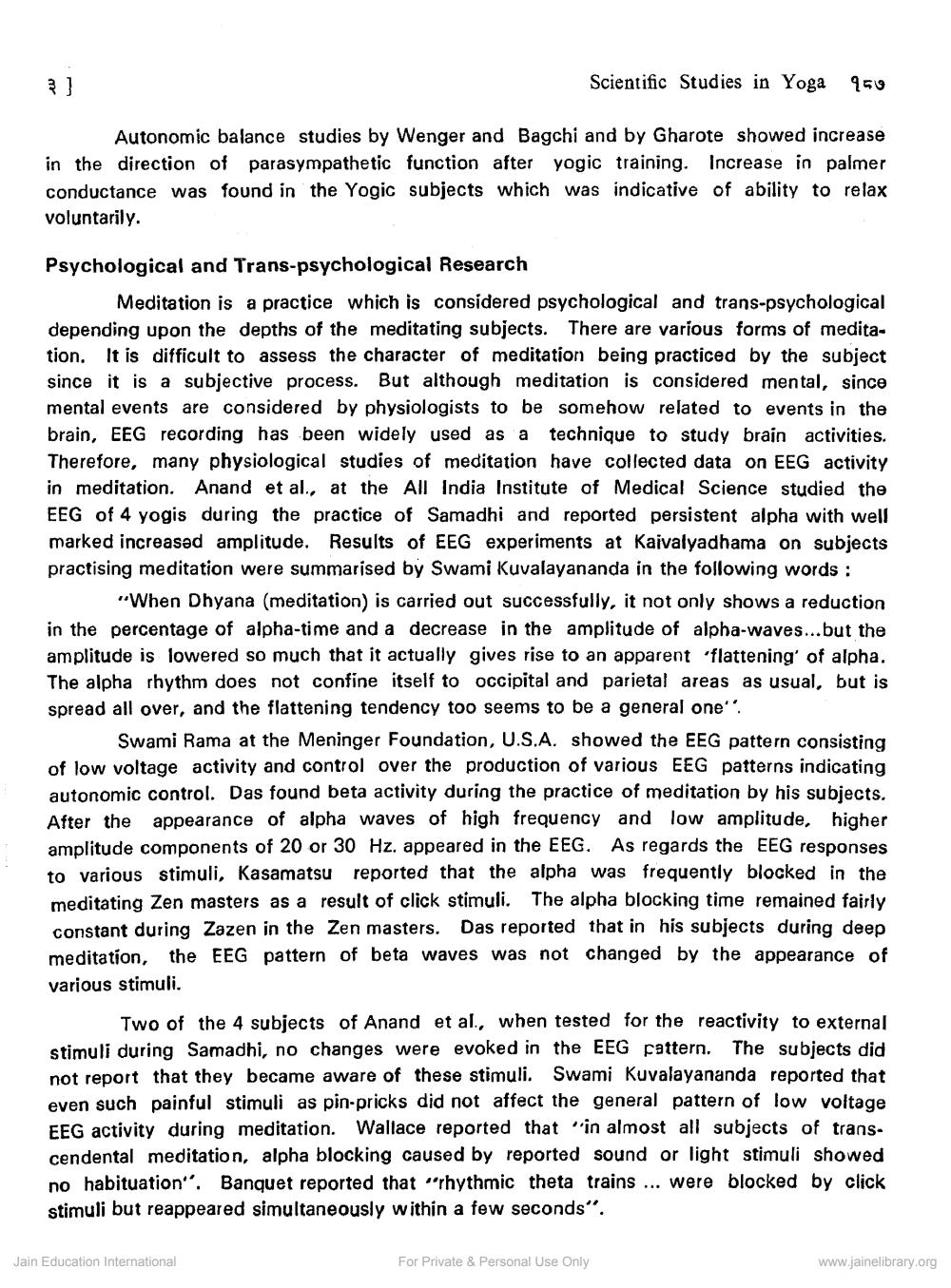________________
Scientific Studies in Yoga
950
Autonomic balance studies by Wenger and Bagchi and by Gharote showed increase in the direction of parasympathetic function after yogic training. Increase in palmer conductance was found in the Yogic subjects which was indicative of ability to relax voluntarily.
Psychological and Trans-psychological Research
Meditation is a practice which is considered psychological and trans-psychological depending upon the depths of the meditating subjects. There are various forms of meditation. It is difficult to assess the character of meditation being practiced by the subject since it is a subjective process. But although meditation is considered mental, since mental events are considered by physiologists to be somehow related to events in the brain, EEG recording has been widely used as a technique to study brain activities. Therefore, many physiological studies of meditation have collected data on EEG activity in meditation. Anand et al., at the All India Institute of Medical Science studied the EEG of 4 yogis during the practice of Samadhi and reported persistent alpha with well marked increasəd amplitude. Results of EEG experiments at Kaivalyadhama on subjects practising meditation were summarised by Swami Kuvalayananda in the following words:
"When Dhyana (meditation) is carried out successfully, it not only shows a reduction in the percentage of alpha-time and a decrease in the amplitude of alpha-waves...but the amplitude is lowered so much that it actually gives rise to an apparent 'flattening' of alpha. The alpha rhythm does not confine itself to occipital and parietal areas as usual, but is spread all over, and the flattening tendency too seems to be a general one''.
Swami Rama at the Meninger Foundation, U.S.A. showed the EEG pattern consisting of low voltage activity and control over the production of various EEG patterns indicating autonomic control. Das found beta activity during the practice of meditation by his subjects. After the appearance of alpha waves of high frequency and low amplitude, higher amplitude components of 20 or 30 Hz. appeared in the EEG. As regards the EEG responses to various stimuli, Kasamatsu reported that the alpha was frequently blocked in the meditating Zen masters as a result of click stimuli. The alpha blocking time remained fairly
constant during Zazen in the Zen masters. Das reported that in his subjects during deep meditation, the EEG pattern of beta waves was not changed by the appearance of various stimuli.
Two of the 4 subjects of Anand et al., when tested for the reactivity to external stimuli during Samadhi, no changes were evoked in the EEG pattern. The subjects did not report that they became aware of these stimuli. Swami Kuvalayananda reported that even such painful stimuli as pin-pricks did not affect the general pattern of low voltage EEG activity during meditation. Wallace reported that in almost all subjects of transcendental meditation, alpha blocking caused by reported sound or light stimuli showed no habituation. Banquet reported that "rhythmic theta trains ... were blocked by click stimuli but reappeared simultaneously within a few seconds".
Jain Education International
For Private & Personal Use Only
www.jainelibrary.org




